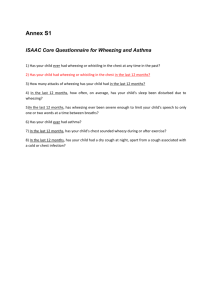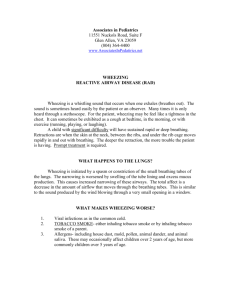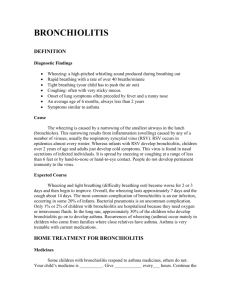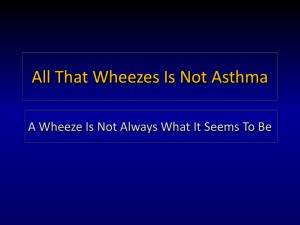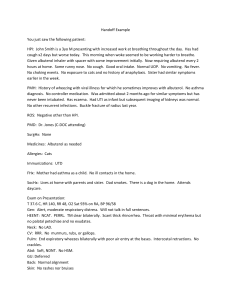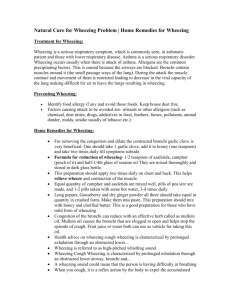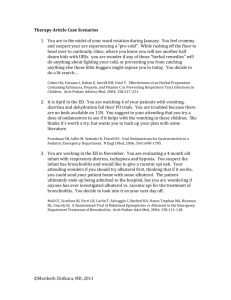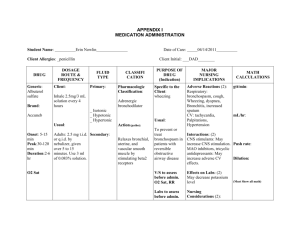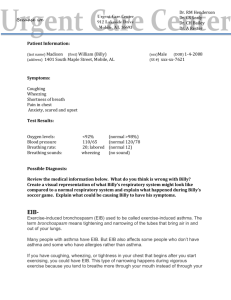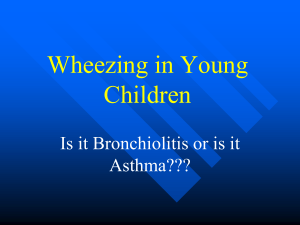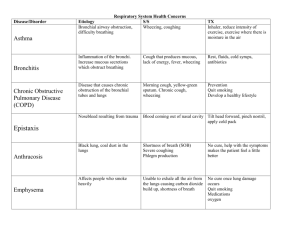Wheezing - Great Destinations Pediatrics
advertisement
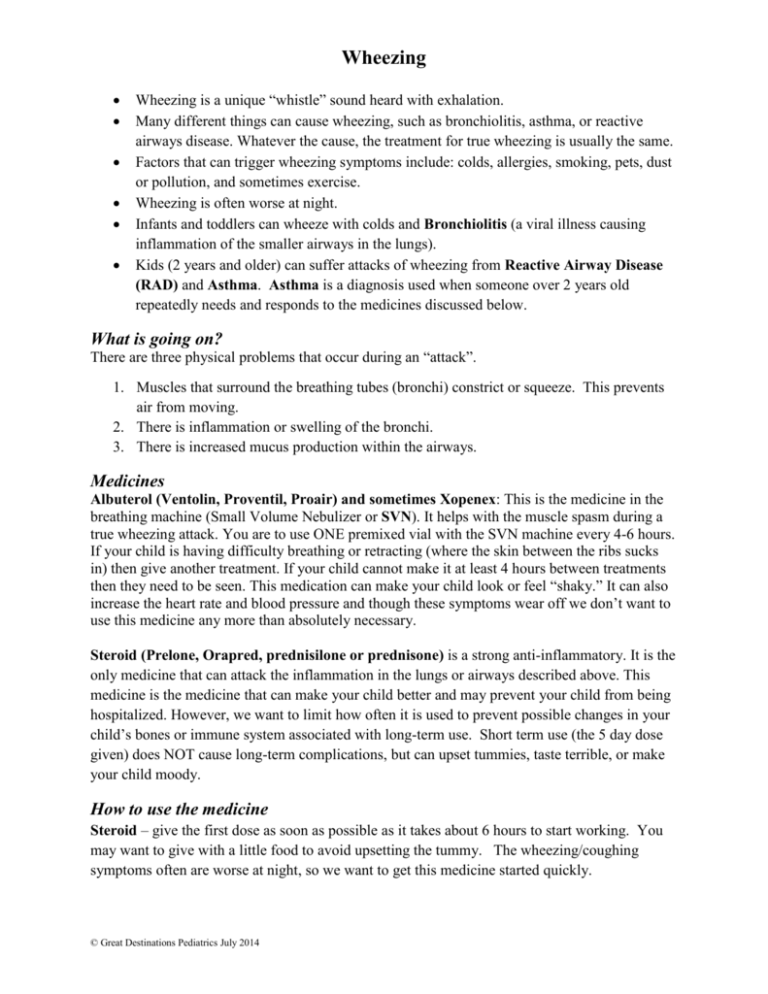
Wheezing Wheezing is a unique “whistle” sound heard with exhalation. Many different things can cause wheezing, such as bronchiolitis, asthma, or reactive airways disease. Whatever the cause, the treatment for true wheezing is usually the same. Factors that can trigger wheezing symptoms include: colds, allergies, smoking, pets, dust or pollution, and sometimes exercise. Wheezing is often worse at night. Infants and toddlers can wheeze with colds and Bronchiolitis (a viral illness causing inflammation of the smaller airways in the lungs). Kids (2 years and older) can suffer attacks of wheezing from Reactive Airway Disease (RAD) and Asthma. Asthma is a diagnosis used when someone over 2 years old repeatedly needs and responds to the medicines discussed below. What is going on? There are three physical problems that occur during an “attack”. 1. Muscles that surround the breathing tubes (bronchi) constrict or squeeze. This prevents air from moving. 2. There is inflammation or swelling of the bronchi. 3. There is increased mucus production within the airways. Medicines Albuterol (Ventolin, Proventil, Proair) and sometimes Xopenex: This is the medicine in the breathing machine (Small Volume Nebulizer or SVN). It helps with the muscle spasm during a true wheezing attack. You are to use ONE premixed vial with the SVN machine every 4-6 hours. If your child is having difficulty breathing or retracting (where the skin between the ribs sucks in) then give another treatment. If your child cannot make it at least 4 hours between treatments then they need to be seen. This medication can make your child look or feel “shaky.” It can also increase the heart rate and blood pressure and though these symptoms wear off we don’t want to use this medicine any more than absolutely necessary. Steroid (Prelone, Orapred, prednisilone or prednisone) is a strong anti-inflammatory. It is the only medicine that can attack the inflammation in the lungs or airways described above. This medicine is the medicine that can make your child better and may prevent your child from being hospitalized. However, we want to limit how often it is used to prevent possible changes in your child’s bones or immune system associated with long-term use. Short term use (the 5 day dose given) does NOT cause long-term complications, but can upset tummies, taste terrible, or make your child moody. How to use the medicine Steroid – give the first dose as soon as possible as it takes about 6 hours to start working. You may want to give with a little food to avoid upsetting the tummy. The wheezing/coughing symptoms often are worse at night, so we want to get this medicine started quickly. © Great Destinations Pediatrics July 2014 Wheezing Give the other doses in the morning just before breakfast. By eating breakfast right after the steroid is given it takes away the bad taste and protects their stomach. Albuterol -- For the first two nights, give the SVN treatments every four hours even at night. After that you may let your child sleep without having to give the treatment. If they wake up coughing, give a treatment. Continue to give SVN treatments every 4 hours during the day. Follow-up We would like to see you back in 5 days to assess your child’s progress. Please DO NOT give any Albuterol (SVN treatment) within 4 hours prior to your next appointment so we can best evaluate them. If you give the albuterol right before the visit, then we will not know if your child is improving or if it is the medicine that has taken the wheeze away. When to call If at any time your child looks like he or she is having trouble breathing (respiratory distress), call us immediately or go to the ER. Signs of respiratory distress are shortness of breath, rapid breathing, difficulty breathing, flaring nostrils, retractions (skin of ribs sucking in) and abdominal breathing. Give your child an albuterol treatment and if things do not improve go to ER or call us. Call 911 if your child turns blue or stops breathing. © Great Destinations Pediatrics July 2014
